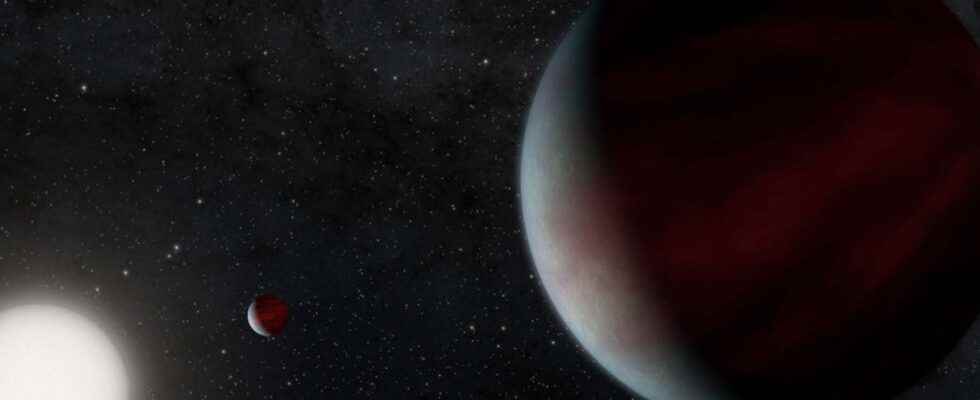There are currently nearly 5,000 confirmed exoplanets. And astronomers keep finding new candidates. Still in the archives of the Kepler Space Telescope today. They report the discovery of no less than 172 new candidates.
You will also be interested
[EN VIDÉO] Exoplanets What is an exoplanet, where are they found and why are they so interesting? Video response!
For nine whole years, the Kepler space telescope (Nasa) explored our Galaxy in search of planets extrasolar. Among the candidates he has tracked down, more than 2,800 have been confirmed. But 3,250 are still awaiting confirmation. Including a batch of 172 which has just been updated for the first time by a fully automated detection system which has sifted through the archived data of the space telescope retired since 2018.
Note that these observations of candidate exoplanets were carried out during the one that the astronomers call Kepler’s K2 mission. A mission launched with limited capabilities after a mechanical failure occurred on the space telescope. Despite everything, he was able to continue to return useful data to researchers.
Some amazing exoplanets
Thus several planets – or planetary systems since there could be 18 hitherto unknown – which appear in this new catalog seem to present strange characteristics. To 650 light years Earth, for example, EPIC 249559552 consists of two exoplanets a little smaller than Neptune. They orbit around a star similar to our Sun. Caught in a sort of gravitational dance. A resonance orbital which pushes closest to its star to travel five times its orbit while the other does it only twice.
Further away from us, some 3,500 light-years away, EPIC 249731291 also hosts a solar-type star and two gas giant planets. Who gravitate closer to their Sun that the orbit of Mercury ! They could thus reveal important clues about how the planets are formed. Even on how they can migrate from one orbit to another during the long life of planetary systems.
715 new exoplanets detected by Kepler
For 4 years, Kepler had discovered around 3,600 candidates for exoplanets. NASA has just announced that 715 of them have passed the tests, which door to 961 the number of cousins of the planets of the Solar System discovered by this satellite. Since the first discovery in 1995, the hunting chart now includes more than 1,790 exoplanets in the Milky Way. This is enough to stimulate the exobiologists and the members of Seti.
Article by Laurent Sacco published on 02/27/2014
Some will end up wondering why no one has detected the black monolith ofArthur clarkeon the Moon . NASA has just announced that the archives of data taken by Kepler, between May 2009 and March 2011, had made it possible to confirm the existence of 715 new exoplanets.
Contrary to the usual procedure, for a number of years, which has been that the discoveries of exoplanets flushed out by the planetary transit methodare confirmed on the ground using the radial velocity method, it was enough to analyze ingeniously the observations of Kepler.
Multiple transit exoplanet systems
Indeed, the 715 new exoplanets are in fact part of multiple planetary systems around 305 stars. In this case, it is possible to use methods resulting from the calculation of probabilities and the statistical analysis of the observations to, from the transits alone, draw convincing proof of the existence of these stars . The interpretation of periodic decreases in brightness of a sun like the succession of transits of a exoplanet is uncertain, in particular because the activity of stars can be more or less variable. But when there are multiple transits of exoplanets within a planetary system, the uncertainty about the interpretation of these drops in luminosity can be reduced, as the members of the Kepler mission have shown. We can then admit the presence of exoplanets without having recourse to a confirmation by the radial velocity method.
A few days ago, the site of the encyclopedia of extrasolar planets developed and updated by the astronomer Jean Schneider and his colleagues, indicated 1,080 exoplanets discovered since 1995. The number of 2,000 extrasolar planets known in the Milky Way is therefore not very far. Kepler still has candidates for this title in its data archives, awaiting confirmation. Among those just discovered by the satellite, about 95% are less massive than Neptune (whose size is around 4 times the diameter of the Earth).
From Kepler to Seti via Plato and James Webb
Four of these new exoplanets could claim the title ofexoterres because they orbit in the habitability zone and have a diameter less than 2.5 times that of the Earth. One undoubtedly attracts the attention of exobiologists : Kepler-296f, which orbits a red dwarf twice the size of the Sun. The massof this exoplanet is still unknown but its diameter is estimated to be twice that of the Earth. It is therefore not yet known whether it is an Earth-like planet or an ocean planet for example.
In a few years, the exoplanets already discovered will be revealed more thanks to the mission Cheops . But it is mainly from the James Webb telescope that the revelations are expected. They will concern the chemical composition of atmospheresfrom superterres . The mission PlatoEsa should also help increase the number of potentially habitable planets known in the 2020s. Above all, they will be exoplanets much closer to us than those discovered by Kepler. Within 10 years, the search for biosignatures, or even technosignatures, should therefore make a significant leap and provide more precise targets for members of the Seti . When will you discover a Dyson sphere ? Nobody knows. Alas, Carl Saganis no longer here to comment on these findings.
Interested in what you just read?
.
fs3
